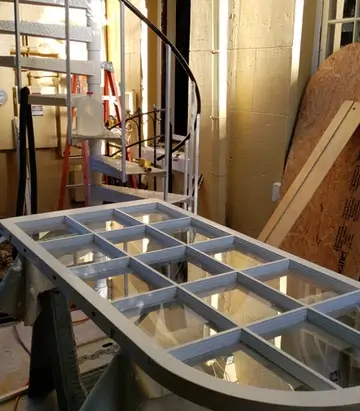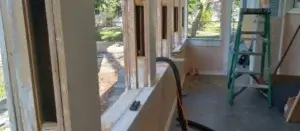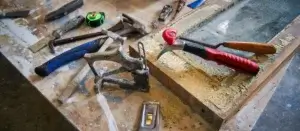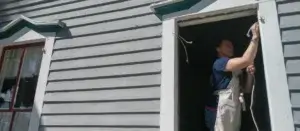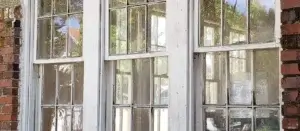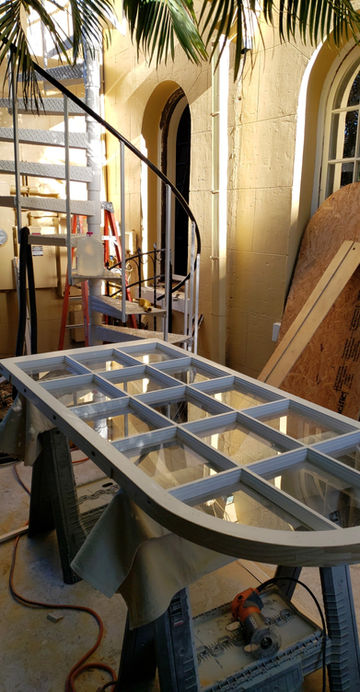
I first learned to hang doors in my late teens. I was the helper for two high end carpenters and we all worked for a man named Steve Usrey – Usrey and Company Builders.
One particular project was a 100% custom to the “T” home in the Olmos Park neighborhood of San Antonio, Texas. Old money. The doors and windows were handmade at a local shop from authentic Honduran mahogany. I was instructed to not let my sweat hit the raw wood as it would leave a stain.
The jambs came out first and I helped fasten them to solid brick openings throughout the house. They were ten feet tall. I watched as the carpenter shimmed, plumbed, leveled and strung the jambs.
Strung? That’s the technique of taking a string, stretching it diagonally from the bottom of one leg and across to the opposite top corner, and then from the other top corner, diagonally down the the bottom of the other leg. The strings crossed in the center, forming an “X” across the door. If the spot where the two strings crossed touched – you knew that the jamb was set in a perfectly flat plane on one face. If they didn’t touch at the intersection, the carpenter made adjustments to the jamb legs until they did.
Stringing the door frame was an important first step. If you knew the frame was right, the door could then be hung properly.
The doors would come and I was instructed to store them by leaning them against the wall a certain way. Lean them poorly and they could warp. I’d help the carpenter scribe the doors to exactly fit newly installed jambs. We’d rout for the hinges, mortise for the hardware and move to the next one. By the end of the job I’d learned an enormous amount, enough that the carpenters let me hang a door on my own. The one in the back of the house – to the closet.
It took a while, but I did it. I suppose it was acceptable because they didn’t do it over.
Over the years I have hung hundreds of doors. When moved to Tampa with my new wife, one of my first jobs was hanging doors for a local company here – West Tampa Door. I earned enough doing that that I was able to move out of my apartment and into a house. An old house with old windows, a story for another time.
Being able to hang doors was a huge milestone for me in my path as a carpenter. There wasn’t anyone to tell me I’d arrived or give me a title, but once upon a time, I’d hung enough doors on my own and made enough money doing it that I felt comfortable giving myself the title, “Carpenter.” I still have estimate forms that say at the top, “Stephen M. Quillian – Carpenter.” I could do other things as a carpenter, but hanging doors is what gave me the confidence to call myself one.
You might say to yourself, “The title of the post is Casement Windows Are Complicated. Why are you talking about doors?”
I’m talking about doors and my journey to learn about them because it was learning about doors that opened the door (ha ha) to doing casements. Casement windows are essentially doors in miniature, and they are every bit as complicated as door hanging, if not harder. There are so many variables to get right, so many things that consider, that most people can’t do it, or won’t spend the time to learn.
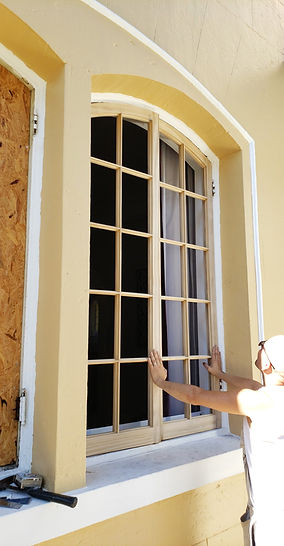
I’m here on a project right now that’s been all casement windows. But not only casement windows, radiused topped casemt windows. They aren’t easy. They have problems. They need troubleshooting. If I didn’t know how to make them – I’d probably be screwed. Some of these were beyond repair. They were rotten, twisted, sagging, ugly, painted shut and everything else you could imagine. My brain is tired, but I am really really satisfied inside.
That is part of the reward for doing what I do. I contend with and overcome problems all day long, and projects like this one are particularly challenging.
The world needs more of us. Sometimes I feel alone in this world where so few craftspeople exist. But I am also inspired because I’ve surrounded myself with a few good people I can pass it on to.
